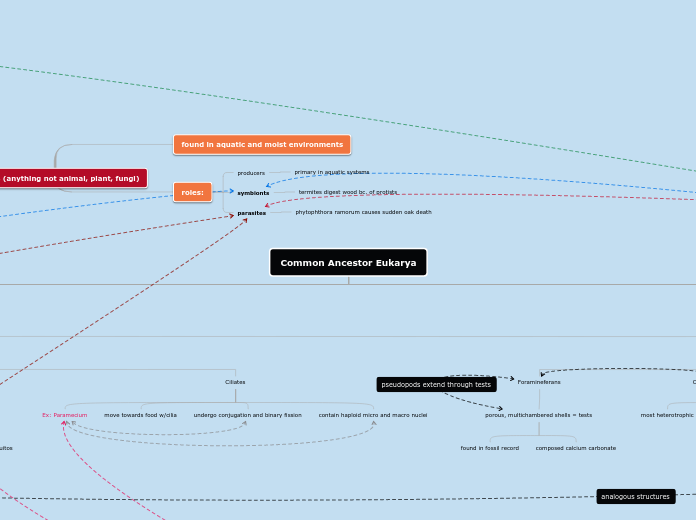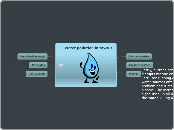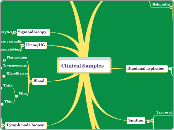Protists (anything not animal, plant, fungi)
roles:
parasites
phytophthora ramorum causes sudden oak death
symbionts
termites digest wood bc. of protists
producers
primary in aquatic systems
found in aquatic and moist environments
Amoebas - pseudopods
membrane-enclosed alveoli
Mixotrophs
Cell Type
Multi-Celled
Single-Celled
Colony
Examples
hairy and smooth flagellum
chemohetero, photoauto, mixo
Photosynthetic
crystalline, spiral rods on flagella
mouth grooves
unique cytoskeleton
mitochondria
Common Ancestor Eukarya
Unikonta - chemoheterotrophic
Amoebazoans
Entamoebas
Ex: entamoeba histolytica
third leading cause of death
found in untreated water
parasitic
Tubulinds
Slime molds
Cellular
move towards food
form aggregate colonies
when facing starvation
Plasmodial
extend over its food
consume via phagocytosis
many diploid nuclei
Opithokonts
Nuclearids
Fungi
Choanoflagellates
Animals
Archaeoplastida
Plants
descended from green algae
Charophytes
Chlorophytes
symbionts in lichens
prefer environments with intense/ultraviolet radiation
found in freshwater
Ex: Volvox
Ex: Ulva
Red Algae
most abundant in tropic coasts
Ex: seaweeds
Dulse
Nori = sushi
contain phycoerythrin
SAR Clade
Rhizarians
Radiolarians
symmetrical cytoskeleton = silica
pseudopods "radiate" from them
used for phagocytosis
Cercozoans
parasites and predators
most heterotrophic
Foramineferans
porous, multichambered shells = tests
composed calcium carbonate
found in fossil record
Alveolates
Ciliates
contain haploid micro and macro nuclei
undergo conjugation and binary fission
move towards food w/cilia
Ex: Paramecium
Apicomplexa
Ex: (genus) Plasmodium
need humans and mosquitos
malaria
parasites to animals
most need two hosts to complete life cycle
spread with spores in host
Dinoflagellates
two flagella
cause red tide (toxic for species)
cell wall = cellulose plates
Strametoplies
Brown Algae
Structure
blades (leaf-like)
stipe (stem-like)
holdfast
Ex: seaweed
Golden Algae
Unique pigments
carotenoids
Diatoms
Ex: phytoplankton
silica cell wall
diatomaceous earth = fossils
Excavata
Euglenozoans
Euglinids
Ex: euglenia
pocket w/ 1+ flagella
Kinetoplastids
Ex: tryptosoma
Chaga's disease
sleeping sickness
DNA clump - kinetoplasts
Parabasilids
Ex: trichomonas vaginalis
hydrogenosomes
Diplomonads
Ex: Giardia intestinalis
multiple flagella
two nuclei
mitosomes









